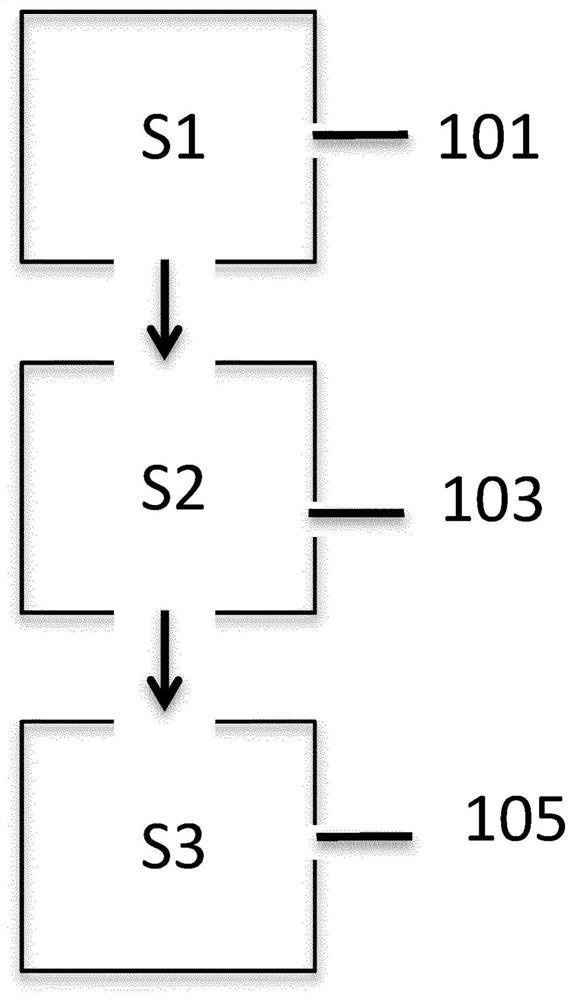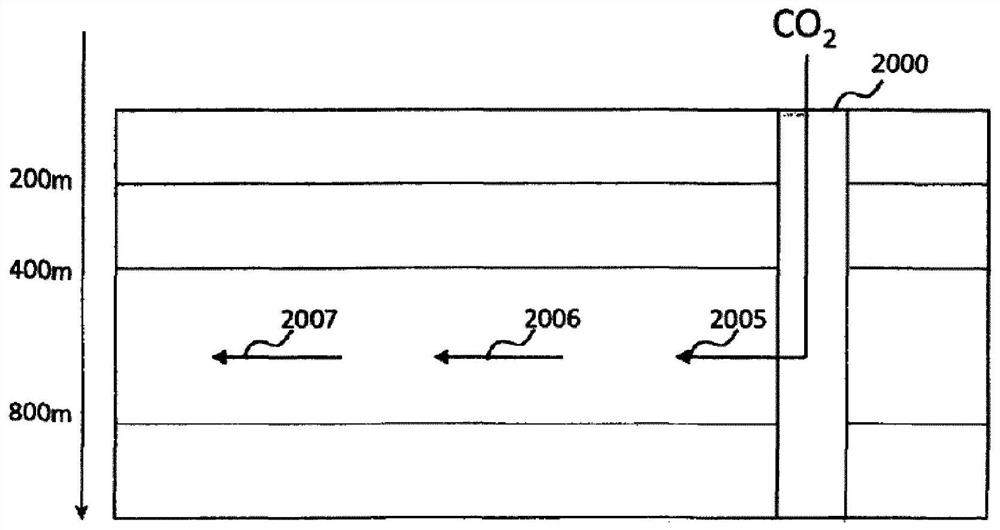A method of abating carbon dioxide and hydrogen sulfide
A carbon dioxide and hydrogen sulfide technology, applied in chemical instruments and methods, separation methods, earthwork drilling, etc., can solve the problems of not describing the method of hydrogen sulfide emission reduction in detail, not fully understanding the usefulness, etc., to promote safe long-term storage , the effect of improving safety and reducing the risk of leakage
- Summary
- Abstract
- Description
- Claims
- Application Information
AI Technical Summary
Problems solved by technology
Method used
Image
Examples
Embodiment 1
[0159] 0.07kg / s of CO 2 Gas cleaning plants or gas separation stations from geothermal power plants. The initial pressure of the gas was 30 bar. To deliver the gas to the injection well, tubing with an outer diameter (OD) of 40 mm was chosen, resulting in a pressure drop of 1.45 bar. Including other pressure losses, a wellhead pressure of 28 bar is assumed. For injection, a tube of OD 32mm is chosen, resulting in a pressure drop of 0.41 bar, but due to gravity, the head at the merge point will increase by 1.1 bar and the pressure at the merge point will be 28.6 bar.
[0160] The injection tube was an OD 75mm tube and a volumetric flow of water of 1.94 kg / s was required to dissolve gaseous carbon dioxide. The pressure drop under these conditions was 0.51 bar / 100m. Therefore, due to the pressure drop down to the merge point, the water column in the injection pipe will be about 13m above the water level in the well. There is no need to change the location of the merge point ...
Embodiment 2
[0163] In this example, the partial pressure of carbon dioxide is chosen to be 25 bar downhole. This means saturation or 36g CO at 17°C at 25 bar pressure 2 / kg water. At this temperature and pressure, the volume of carbon dioxide is about 20 times that of an equivalent amount of water at atmospheric pressure. In order for the water to be able to pull the gas down, the volume of the gas should not exceed the volume of the water, preferably much less. In order for the water to be able to carry the gas down the pipe, the hydraulic pressure at the point of gas release (merging point) should preferably be close to the saturation pressure of 25 bar. However, the pressure can be made lower if sufficient volumetric water flow is maintained. Some of the gas will dissolve in the water, and the rest of the gas will form small bubbles and travel down the tube with the water. As depth increases, the bubbles become smaller with increasing pressure, and the gas continues to dissolve in ...
Embodiment 3
[0165] In this embodiment, if Figure 10 As shown, monitoring well 610 is interconnected with injection well 612 by a flow path 614, which may be, for example, a fracture in a geological reservoir. The monitoring well 610 is implemented to estimate CO 2 mineralization capacity. The estimation step consists of using one or more tracer substances to trace the CO 2 gas or water or carbon. Thus, one or more types of tracers can be added via an appropriate tracer source for tracing one or more of these in a controlled manner such that CO 2 The molar ratio between gas or water or carbon and one or more tracer substances is predetermined, ie the molar ratio is pre-fixed. This means that only one tracer can be used for tracer, e.g. only CO 2 , or C alone, or water alone or a combination thereof. As an example, SF 5 CF 3 Tracer, SF 6 Tracer or rhodamine tracer can be applied to trace the dilution between the injected fluid and the ambient water in the reservoir, and to charact...
PUM
 Login to View More
Login to View More Abstract
Description
Claims
Application Information
 Login to View More
Login to View More - R&D
- Intellectual Property
- Life Sciences
- Materials
- Tech Scout
- Unparalleled Data Quality
- Higher Quality Content
- 60% Fewer Hallucinations
Browse by: Latest US Patents, China's latest patents, Technical Efficacy Thesaurus, Application Domain, Technology Topic, Popular Technical Reports.
© 2025 PatSnap. All rights reserved.Legal|Privacy policy|Modern Slavery Act Transparency Statement|Sitemap|About US| Contact US: help@patsnap.com



